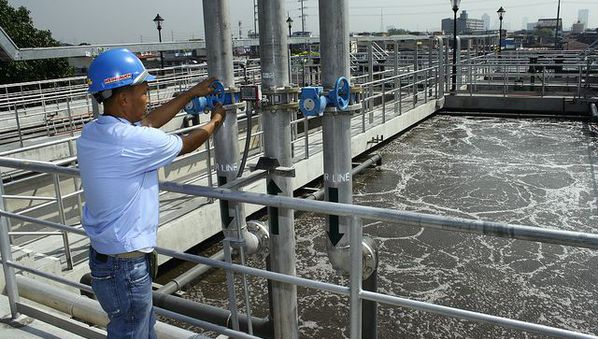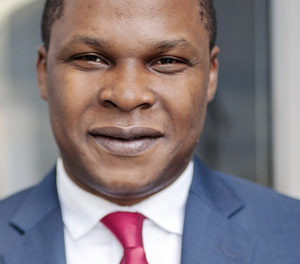
What will it take to solve Windhoek’s water stress? Part 2

By Helmke Sartorius von Bach
Many water stressed cities located in arid areas are classified as economic hubs or administrative centres. However, a critical difference between most of them and Windhoek is the altitude above sea level. Part 2 provides some further insights of Mexico City and Lima, which might provide some lessons for Namibia.
The case of Mexico City
Mexico City’s water originally depended on groundwater, but to supply water for approximately 20 million people, a system consisting of 7 reservoirs, a 127km long aqueduct with 21 km of tunnels, a 7.5km open canal, and a water treatment plant was built for US$1.3 billion. At a cost of approximately US$60 per urban agglomeration resident, the water infrastructure for the highly populated Mexico City is relative low compared to other cities.
Their Cutzamala water system currently supplies only 20% of the water, and operates at almost full capacity, i.e. further population growth will result in further water stress. Its annual rate of withdrawal from the aquifers is significantly higher than the recharge rate, namely 45-54m³/s is abstracted each year, while the natural recharge rate is only about 20m³/s.
This mismatch has resulted in overexploitation which contributed to the lowering of the groundwater table by about one meter each year. Even with this mismatch, desalination is not used because of the high transport costs.
Water cost recovery remains a problem in Mexico City since numerous water connections are not registered and thus not charged. Literature shows that only 49% of the legal connections are metered. In 2010, the water tariff was fixed at US$1.3/m³.
The case of Lima
Lima, the capital of Peru, historically depended on the Rimac river but increasingly depends on the alluvial aquifer from which water is pumped out of more than 2000 wells. The supply system was extended by utilizing the Chillon and Lurin rivers.
The City reintroduced the ancient Mamanteo canal network to bring a slow but steady stream of water from the Andean mountains to the surrounding communities. Lima’s total water supply capacity of 76Mm³ has been constructed for US$43.3 billion. This water investment of Lima was relative expensive at US$4500 per resident. Therefore, because of lack of further funding the follow-up projects did not proceed.
However, the critical water circumstance eventually resulted in the first desalination plant to be introduced for its lower lying areas. Lima follows a water tariff system categorizing users, summarized as follows:

In the absence of metering, consumers are assigned a flat rate for water. It is clear that although their water infrastructure was costly, the water tariff is still relative affordable, compared to global tariffs.
However, Lima residents have similar problems as many Windhoek residents who either have to fetch water or buy from public distribution taps or buy from other residents with water meters and water connections.
Addressing the Namibian situation
Global experience showed that improving access to safe water and appropriate sanitation can quickly turn problems into betterment, such as unlocking education deficits, create work opportunities, and improve health, particularly for women, children and families. Based on these experiences, there are three steps necessary to improve water security and resilience.
1. Understand Risks
Namibia is not exempted from climate change, making rainfall more variable and droughts more common and intense. At the same time, increased urbanization competes with Windhoek’s scarcest resource namely water.
Although the Windhoek water catchment areas had suffered droughts in the past, wet years usually followed, refilling the aquifer and surface reservoirs that supply the city with most of its water.
However, the water stress increased steadily. The residents’ water consumption more than doubled since independence and is competing for the available water supply with other users. Estimates put Windhoek’s water deficit at almost 40 million m³ by 2050. While city officials are aware of these risks and busy with mitigating steps, these steps have to be adjusted to rainfall patterns departing so significantly from the norm, for instance the record 2016 drought.
2. Manage the water budget
It is Windhoek’s challenge to manage its own water budget in the context of the broader circumstance and to allocate resources within realities. The finite water resources (surface water, borehole extraction of the aquifer and the re-use of treated water) must be allocated to a diverse set of users.
In times of drought, and the increasing population pressure, water management becomes even more difficult and causes a great deal of debate in local politics. In the past, city planners were proactive by integrating the urban water management strategies to build greater resilience and efficiency.
However, the question remains whether Windhoek can continue with the current strategies without change. Water tariffs are designed to recover the costs for providing water and sanitation services to ensure proper service delivery and maintenance of existing infrastructure.
Cost recovery alone will not be sufficient in the future, since it does not include all costs and even rarely include the environmental costs of conserving the watersheds that regulate supply and water quality, while the criterion of affordability of individual water consumers is not debated yet.
3. Invest in Resilience
To withstand a changing climate and growing populations, cities must be resilient to the unexpected. Identifying opportunities for rainwater harvesting, dams and underground storage, the treatment of grey water, and the investment in water-efficient systems are key to boost resilience to drought and increased water competition.
However, the affected Namibian capital should look beyond their boundaries for answers. Global experience shows that pairing natural infrastructure with wastewater treatment plants can help cities create jobs to buffer against the impacts of climate change.
For example, inadequate water infrastructure compounded the effects of Sao Paulo’s 2014-2017 droughts, when the city lost more than 30% of its treated water through theft and leaky pipes.
Fighting bush encroachment, which disrupts and destroys local water systems, could also be considered as one of many solutions for resilience to future water shocks.
Water security is an important issue driving the state’s stability and safety. Therefore, the effects of water stress, such as migration, food shortages and general destabilization will become more essential in policy-making. Appropriate planning is required to reduce the likelihood of disputes over water, as people and countries compete for scarce resources.
Water and National Security author, Joshua Busby, argues that risk is maximized when water stress and weak governance intersect, which caused a number of recent conflicts, such as the war in Darfur and fighting in the Lake Chad Basin.
In these instances, diminishing water supply has been a contributing factor to conflict, as groups fought for access to this increasingly precious resource. The solution to these problems lies in water use managed through pricing and more efficient water allocation.
It is clear, that failure to uphold further investment in water and security implies that government will risk future crises, whether they are humanitarian emergencies, disease outbreaks, or conflicts within or between those affected.
It’s time to debate for clear guidlines
Amidst our problematic scenario, the good news is that some players are starting to take action. Each year brings more solutions, such as natural restoration brings water back to dry topographic, wastewater is used for energy, and the groundwater levels are monitored more closely.
However, even the best solutions will not implement themselves. The political will and public pressure are critical to ensure a sustainable water future. It calls for a revision of our Water Resource Legislation to recognize water within socio-cultural, economic and environmental levels.
Therefore, the City of Windhoek needs to focus on the implementation of the following:
* provide and justify funding for water protection through revised water tariffs to establish an environmental compensation mechanism for water resource management,
*channel financial resources to be invested in conservation, the recovery and sustainable use of sources of ecosystem services through agreements between affected parties, and
*regulate the administration of reserve funds for increased flexibility in the implementation and execution of water projects.
These three actions will only be effective if the political will is there to effect water legislation changes.
The following points could serve to start a national debate on water:
Which type of water could be viewed as a fundamental human right and which type should be treated as a commodity?
This debate will have to reflect on water tariffs to address the welfare of society versus cost recovery and affordability. The debate should guide city and rural planners how to interpret our constitution; i.e. Article 95(j) which enjoins the government to actively promote and maintain the welfare of the people by adopting, inter alia, policies aimed at “the consistent planning to raise and maintain an acceptable level of nutrition and standard of living of the Namibian people and to improve public health.” This has to be interpreted in conjunction with Article 95 of the Constitution as well as Article 144 and Article 25 of the United Nations Declaration of Human Rights.
Furthermore, in terms of the Local Authorities Act of 1992, local authorities as an extension of the state have a duty to, among others, provide water to its residents.
Based on the outcome of the above discussions, it is arguable that the reduction of Windhoek’s water stress can be achieved by incentivizing relocation measures for defined city activities to be migrated to other economic growth point locations.
In this regard, Edgar M. Hoover, a leading pioneer in the field of site selection for industrialization, indicated that global evidence showed that the selection of economic growth points are based on (i) demographics, (ii) comparative transportation advantage, (iii) available infrastructure, (iv) competition, (v) sufficient water and (vi) the condition of the geographical site (climate and topography). This explains why urban centres are often situated along or close to coastal areas.
Since the city of Windhoek does not comply with many of these parameters, the migration of an economic sector to another location could also indirectly contribute to address its lack of housing, access to health and educational matters.
Findings from these debates should be used in guidelines how to select economic growth centres for industrialization, as referred to in the NDPs and Vision 2030. For example, Walvis Bay could be selected for industrialization to relieve the pressure on central water consumers. Incentives could be driven through implementing higher tariffs for urban centres which are constrained by water stress to bring us closer to national water demand equilibrium.
The selection of Walvis Bay would require additional desalination plants for industrialization and population growth to follow a water strategy which successful urban growth centres such as Singapore are executing.











































